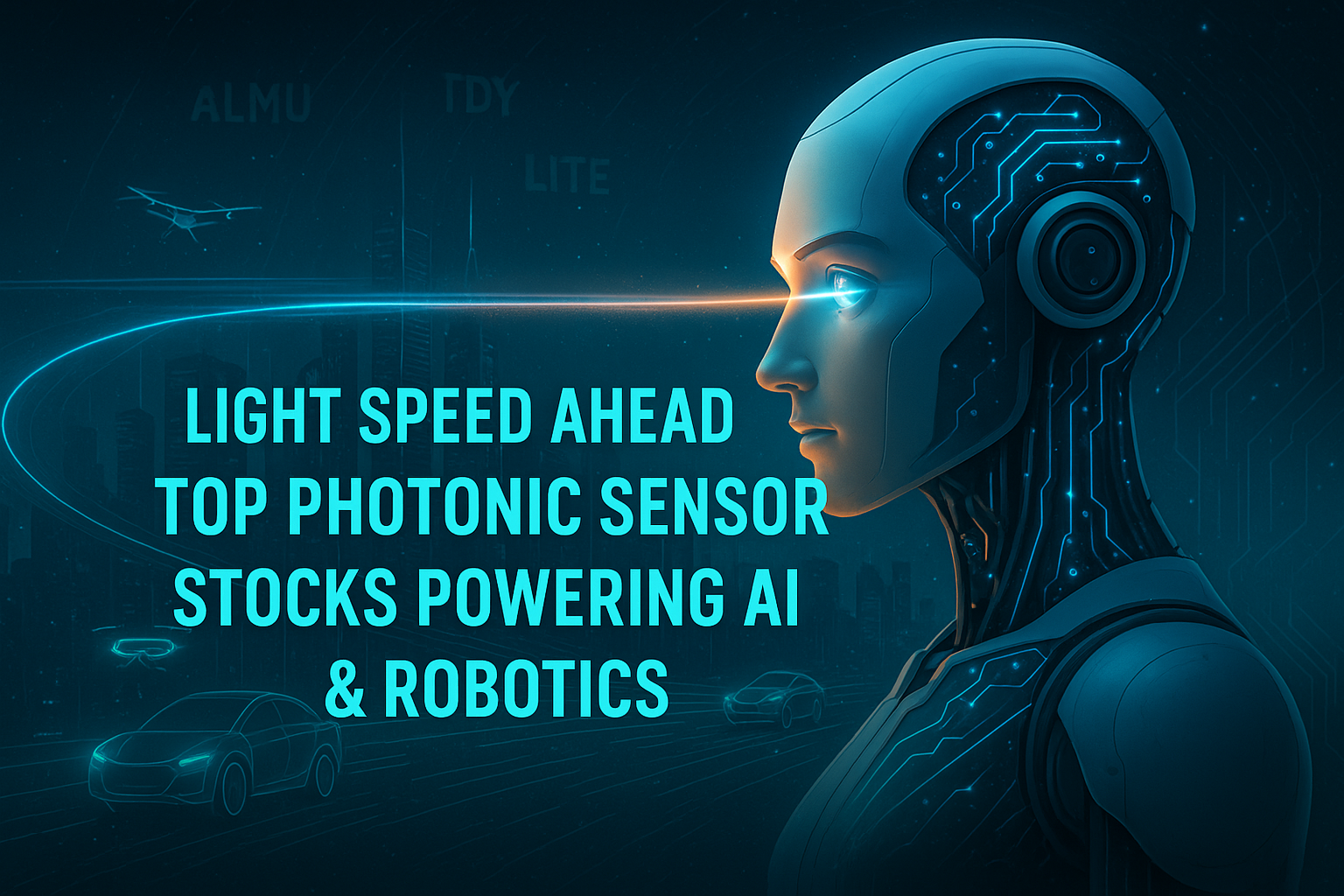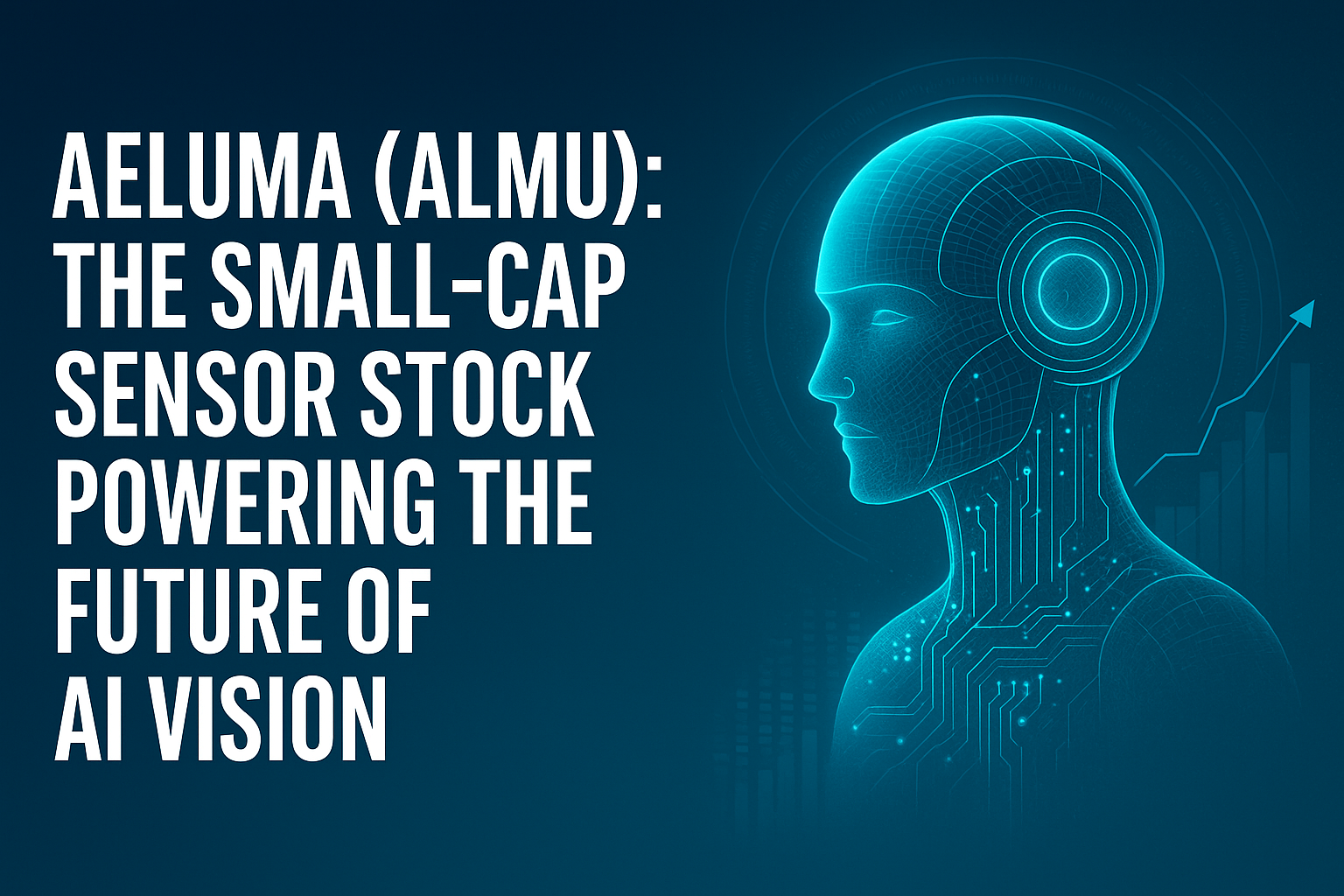
As AI and robotics evolve at breakneck speed, there’s one key technology quietly enabling this rapid progress: photonic sensors. These advanced optical sensors are helping machines “see” the world with extraordinary accuracy and speed, unlocking new levels of intelligence, automation, and efficiency. And while the spotlight often lands on software-driven AI companies, a new breed of hardware enablers—especially those working with light—are poised for breakout growth.
In this post, we explore the best photonic sensor stocks investors should have on their radar as this critical tech takes center stage in the world of autonomous machines and smart systems.
What Are Photonic Sensors—and Why Are They a Big Deal?
Photonic sensors use light (photons) rather than electrical signals to detect, measure, and process information. These sensors are capable of ultra-fast data transmission, high-resolution imaging, and operation in challenging environments. That makes them ideal for use in AI applications, where speed and accuracy are non-negotiable.
From 3D mapping in autonomous vehicles to surgical robots in smart hospitals, photonic sensors are becoming the backbone of machine vision, object detection, and real-time feedback loops. Their ability to capture complex data with minimal latency puts them ahead of conventional electronic sensors in many AI and robotic systems.
Established Leaders in Photonic Sensing
Several publicly traded companies have emerged as dominant players in this space, supplying photonic technology across industries:
🔹 Teledyne Technologies (TDY)
Teledyne is a giant in sensing technologies, with a strong portfolio in photonic imaging systems used in defense, aerospace, and industrial AI applications. Its acquisition of FLIR Systems has further expanded its reach into autonomous vision and thermal sensing.
🔹 Coherent Corp. (COHR)
Formerly known as II-VI Incorporated, Coherent provides laser and photonic components crucial to AI optics, autonomous vehicles, and quantum applications. Its extensive R&D in compound semiconductors makes it a key name in photonics infrastructure.
🔹 Lumentum Holdings (LITE)
Lumentum supplies photonic chips and VCSELs (Vertical-Cavity Surface-Emitting Lasers) used in LiDAR, face recognition, and machine learning systems. With partnerships in automotive and consumer electronics, it’s a key enabler of intelligent edge computing.
These companies offer reliable exposure to photonic innovation, and many already have deep ties to AI hardware supply chains.
Smaller Photonic Stocks with Big Upside
While the giants offer stability, several small-cap and emerging players are making bold moves in the photonics space—often with highly specialized technologies and disruptive potential.
🌟 Aeluma Inc. (ALMU)
Aeluma is building high-performance photonic sensors on scalable, CMOS-compatible platforms, giving it an edge in cost-effective AI and mobility applications. Its work in III-V compound semiconductors could drive major adoption in machine vision and sensor fusion.
🌟 Cepton Inc. (CPTN)
Cepton’s photonic LiDAR sensors are being used in smart cities and autonomous vehicle systems. Its partnership with General Motors for ADAS systems brings real-world validation and a path to mass deployment.
🌟 Luminar Technologies (LAZR)
Known for its advanced long-range LiDAR sensors, Luminar’s photonic systems offer up to 250 meters of accurate object detection—critical for autonomous driving safety. Though volatile, the stock represents a bold bet on next-gen mobility.
These companies may not have the balance sheets of Coherent or Teledyne, but they offer high-risk, high-reward potential for early investors in frontier sensor technology.
AI and Robotics: A Natural Fit for Photonics
AI models require data—massive amounts of it—and robots need precision in how they perceive and interact with the world. Photonic sensors are uniquely suited to meet those demands.
For example:
- Autonomous drones use LiDAR and photonic cameras to navigate in 3D space with minimal latency.
- Factory robots use hyperspectral and time-of-flight photonic sensors to detect objects, measure distances, and automate quality control.
- Medical robots benefit from optical sensors that deliver high-resolution biological data without physical contact.
The takeaway? AI and robotics need photonic sensing to scale, and this need is only accelerating.
What Could Dim the Light? Risks to Watch
Not every photonic sensor stock will shine. Some risks include:
- Slow adoption of autonomous technologies like LiDAR in mass-market vehicles.
- Supply chain pressures in sourcing advanced semiconductor materials.
- Customer concentration risk, especially for smaller firms reliant on a handful of OEMs.
Moreover, many of the small caps in this sector are pre-profit or reliant on major partnerships. Timing your entry matters—especially in a volatile tech market.
Conclusion: Don’t Overlook the Light Speed Revolution
The photonic sensor space blends the cutting-edge physical world with the fast-growing digital domain of AI. Whether it’s autonomous delivery bots, robotic arms, or self-driving cars, machines need better “eyes”—and photonic sensors are delivering them.
By investing in companies like Teledyne, Coherent, and Aeluma, you’re tapping into a foundational technology powering the next decade of automation.
As robotics get smarter and AI gets faster, one thing is clear: the future will be measured in light.





Be the first to comment